How to Photograph Race Tracks From the International Space Station
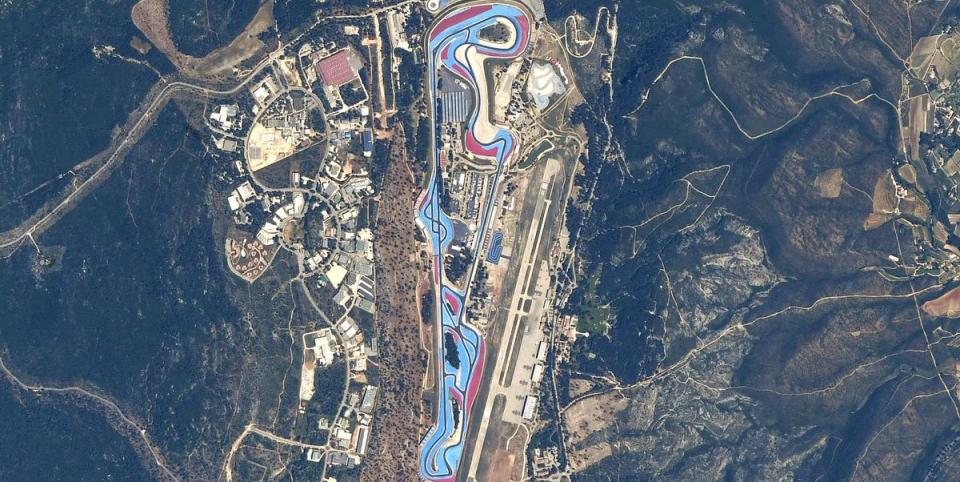
Some day, you might find yourself aboard the International Space Station with a Nikon D5 and the goal to photograph every track on the F1, IndyCar, and MotoGP calendar. It’s unlikely, but that's exactly where Dr. Drew Feustel was last year. He's an astronaut, and was aboard the ISS for its 55th and 56th missions, the latter of which he served as commander.
"Most astronauts take with them a project or something that they want to spend time doing," Feustel told R&T from his home near Houston's Johnson Space Center. Before his missions, he said it occurred to him that he had "an amazing vantage point that I realized was quite unique when it came to racing." So he decided to try and take pictures to show fellow race fans what he could see.
"It might be an opportunity to engage motor sports fans in space and human space flight and exploration," he said. "And, I thought, 'You know, if I really want to do this right, I could probably reach a lot of people if I took pictures of every single race track for the three series that I like following,' which are IndyCar, Formula 1, and MotoGP."
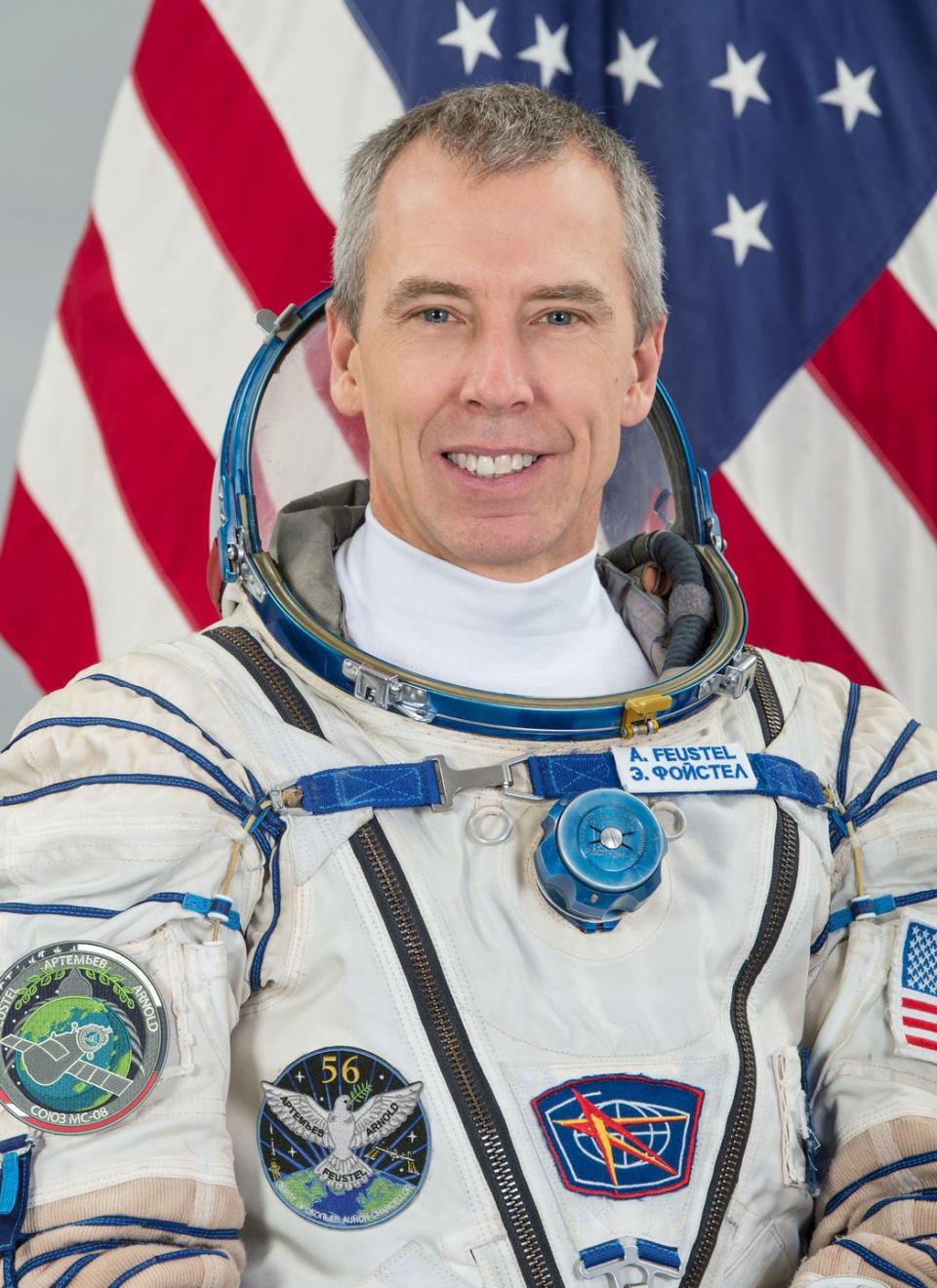
Feustel grew up in Detroit surrounded by car culture. His dad, a Ford engineer, named the future astronaut Andrew Jay so he'd share initials with A.J. Foyt. As a kid, he raced motocross and BMX, and when he was out of high school, he restored Jaguars at a friend's shop and raced karts.
Getting a PhD, starting a family, and becoming an astronaut led Feustel to pause his own racing—though back on Earth since October, he recently entered his first Formula Ford race. He never stopped being a fan.
Which leads us to his time aboard the ISS. The project took a lot of planning—shooting these tracks wouldn't be as simple as aiming down and hitting the shutter.
"I worked ahead of time with a couple of folks from NASA to make sure that I had as much information as I could about the tracks before I launched, so that I knew what to be targeting," Feustel said. NASA employees in mission control got images of the tracks in Google Earth from various elevations so Feustel could determine good geographical reference points to locate each.
Time was tight. Feustel was busy with various day-to-day responsibilities aboard the ISS, which meant he only really had time to shoot on nights and weekends. "If they were taken in the middle of the day it was only because I would plan my day ahead," he said. "You have to go to the Russian Segment to take these pictures," he added. "It's not a long ways away, but it's at the far end of the space station."
The windows of opportunity were short, too. "It's all about orbital dynamics and the rotation of the earth, and the weather, and the sun, day-night cycles," Feustel said. "It could be anything, and you could miss it. And it could be months before you see a location of the earth… We go in cycles. I'll pass over, say, North America in the daylight several times a day for a month or two, and then you'll go three months without seeing it at all in daylight."
All of these factors mean that Feustel had minutes to get things right. Though getting these shots took a lot of effort, the results were worth it. Here, he talks about some of his favorites, and the hardest pictures to get.
Melbourne
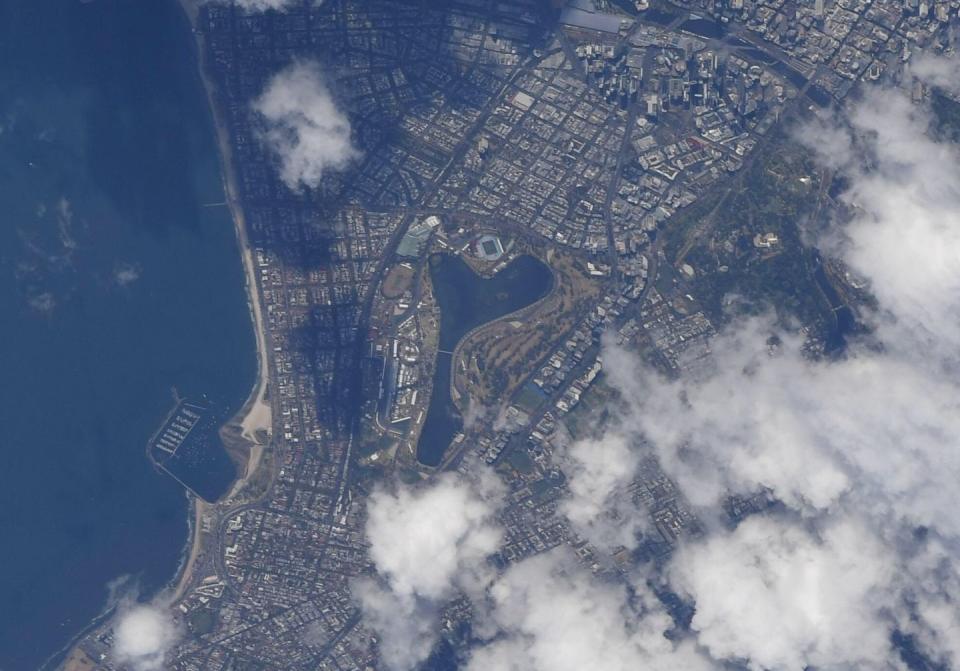
"The first weekend I was up there was the Formula 1 opening race in Melbourne, and I just happened to fly over the track within two minutes of the start of the race, and it was sunny. I snapped a picture, and I thought, 'Man, this was going to be easy.' Then quickly realized that it was almost impossible."
Spa Francorchamps
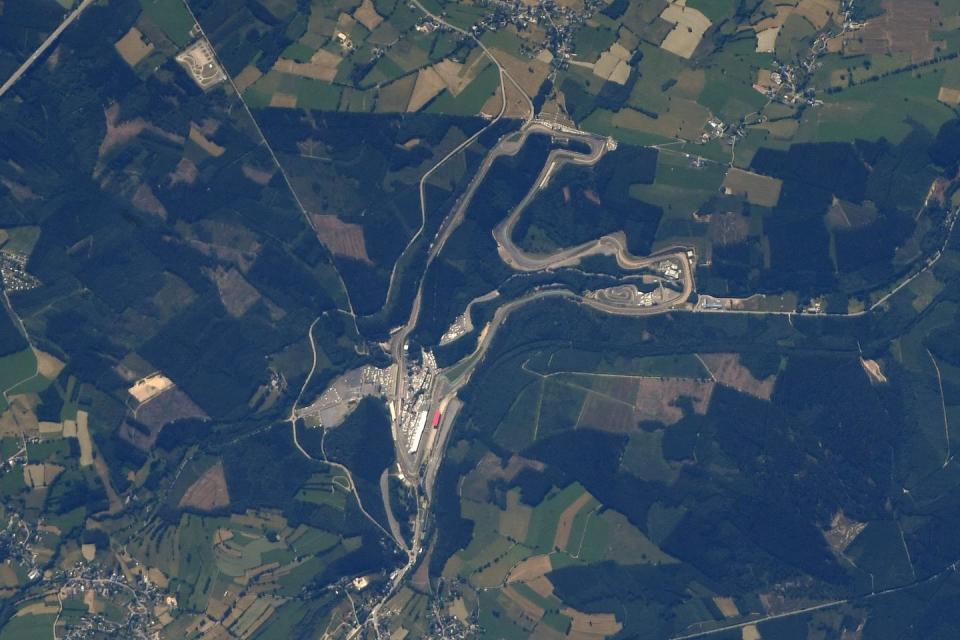
"There were a few tracks that were really a problem for me. Spa was one of those tracks because there's not a lot of differentiating geography around there. The trees all looked the same, no massive cities nearby to triangulate from… I spent months trying to get Spa. Finally, got a few shots, and I was really never happy with them because of the clarity and the focus and the lighting."
Silverstone
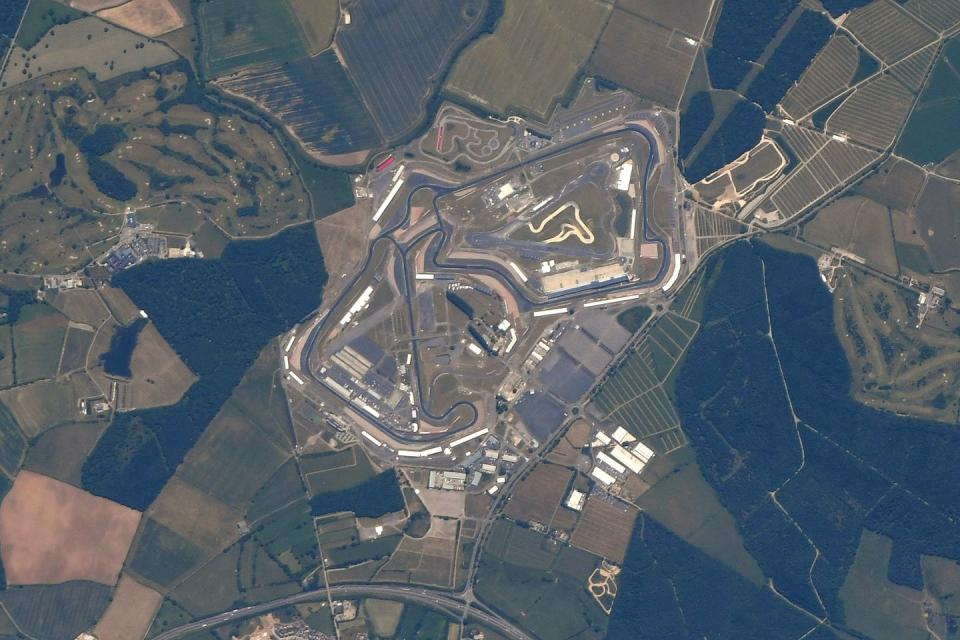
"Silverstone is a great track because it's quite a famous historical road track in Europe. A lot of F1 grew out of that region of the world. I think [it's] a beautiful track from space. It was also an extremely challenging track to photograph, as well. That one took me many months. In fact, I think I got the first photo of it just a couple days before the race.
"It was a hard one to get because, [like Belgium], in the middle of England everything's just green. There's no real mountains or topography or big lakes or anything like that. And Silverstone is in kind of unique place itself, so that was a really hard picture to get, so when I finally got it, I felt a lot of gratification that I really worked hard and tried, and tried, and tried. And the images that I got were exceptional. I think some of the best pictures I have in terms of clarity and focus."
Indianapolis Motor Speedway
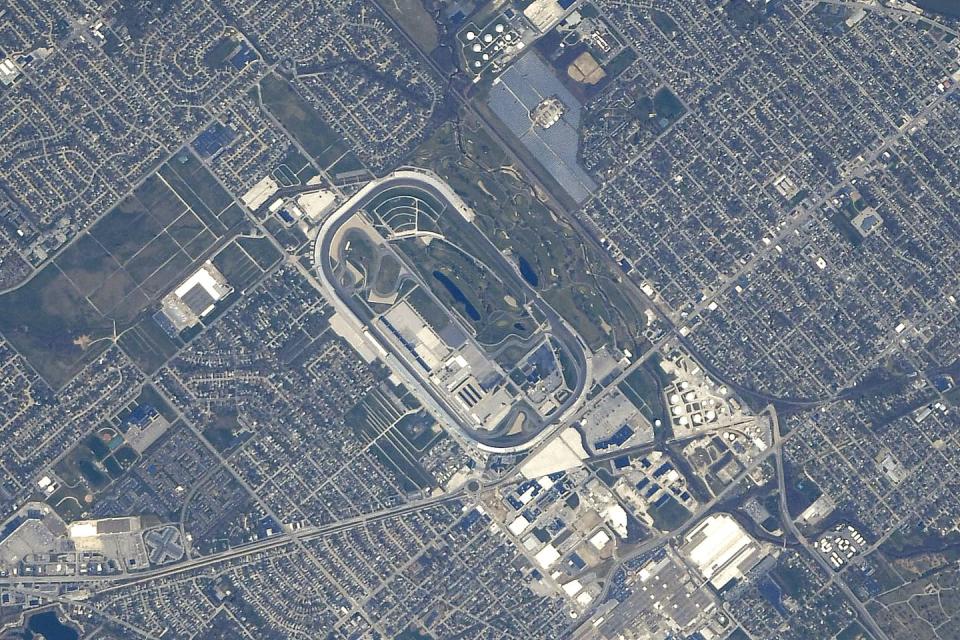
"Indianapolis, although maybe not as stunning and unique from space, i's a very interesting track because it's so large, it's so easy to spot…Indianapolis is an easy city to find, and once you find Indianapolis, you're basically staring at the racetrack. It's pretty much a track you can almost see with the naked eye, or at least its location, whereabouts it should be. So you just point the camera down and boom, it just fills up the lens. It's right there."
Brno
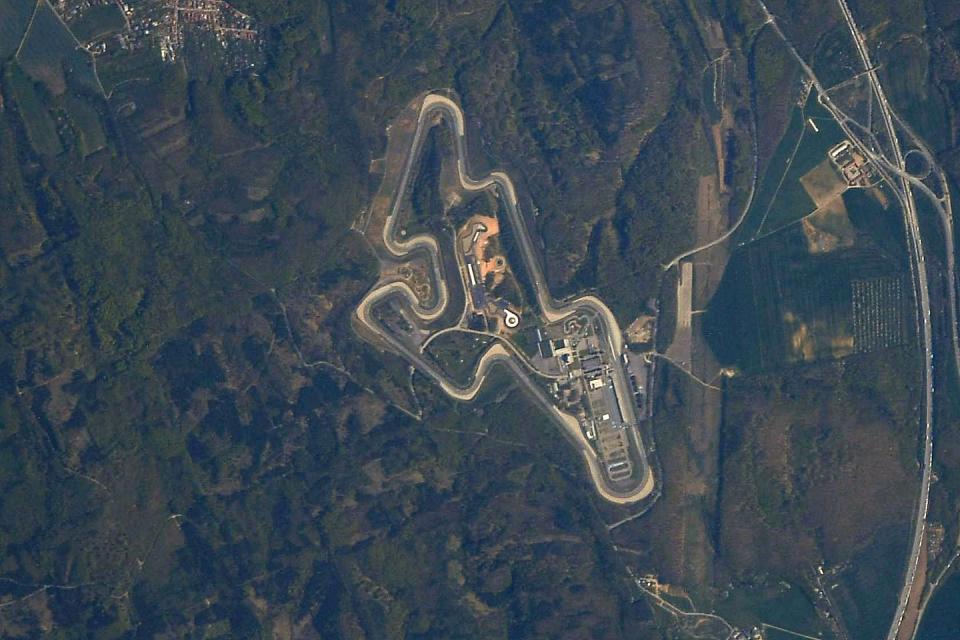
"I was at the MotoGP race the August before I launched. My wife's family is from [Brno]. Her mother was raised in that city, we have relatives there, and we get back to the Czech Republic frequently…It's something that's close to my heart and I think it's cool because it's always been a motorcycle track. And it's a great track…A lot of elevation changes. Just beautiful. Beautiful place to watch a race, beautiful place to drive. It's exceptional."
Paul Ricard
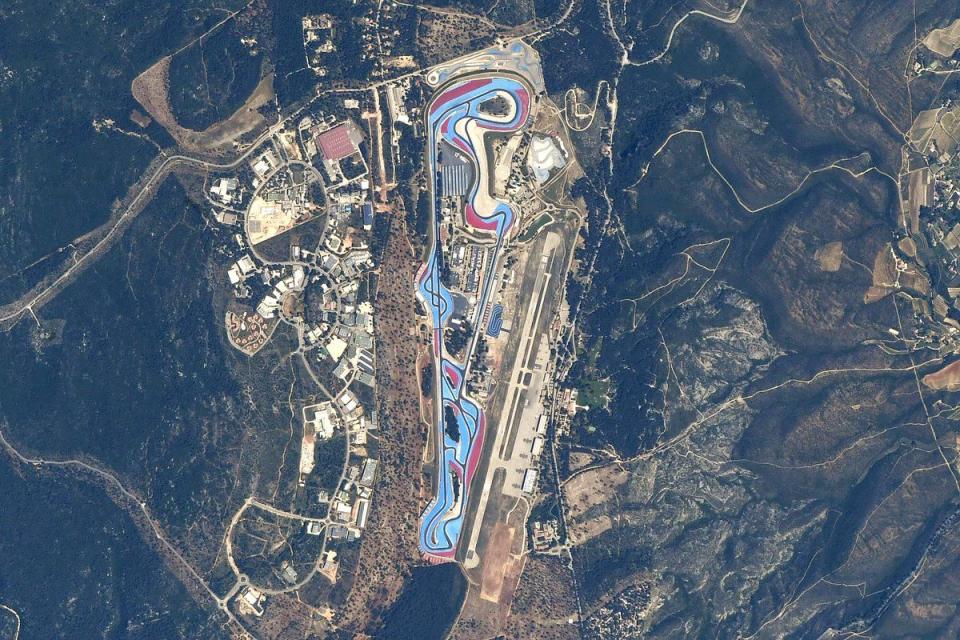
"It's in a really cool part of the world, there along the Mediterranean coast. It's relatively easy to find along the coastline. It's really vivid, and the sun is always shining in a way that just lights that track up. And every time I put the lens on it's like these beautiful blues and reds. Brighter than any other track around the world, in terms of its ability to highlight my viewfinder, and it was cool. I probably have more pictures of Paul Ricard than any other track because it was always the easiest one to find."
Belle Isle, Detroit
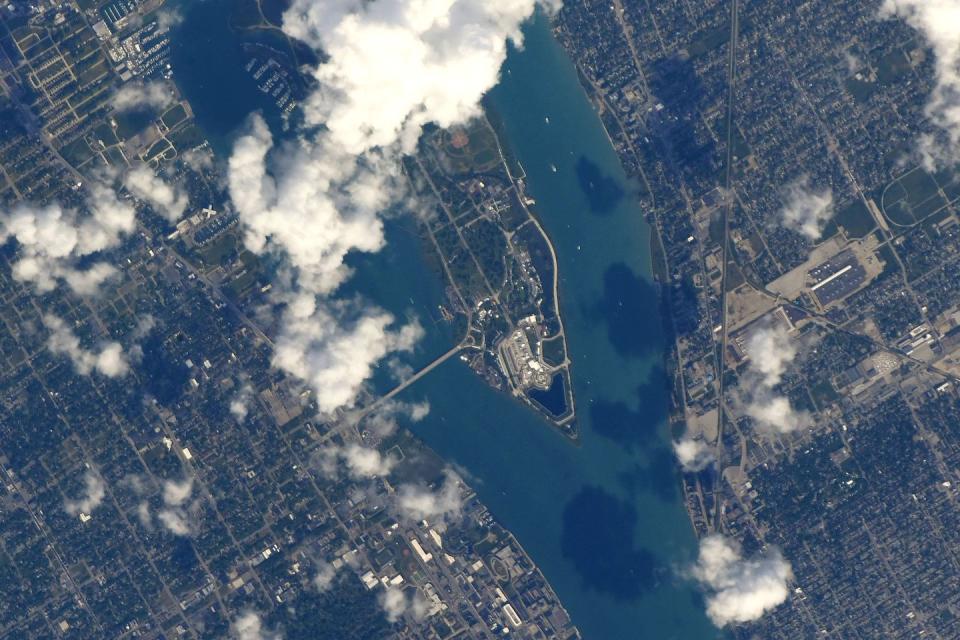
"I actually got pictures of the race…We just happened to be flying over, middle of the day. I think I got a picture of the IndyCar race within a few minutes or an hour of the start of the race. It's a cool track just because it's my home… I've been there, I've seen the track, I've seen the cars there, and it's neat to get pictures of it from space."
Road America
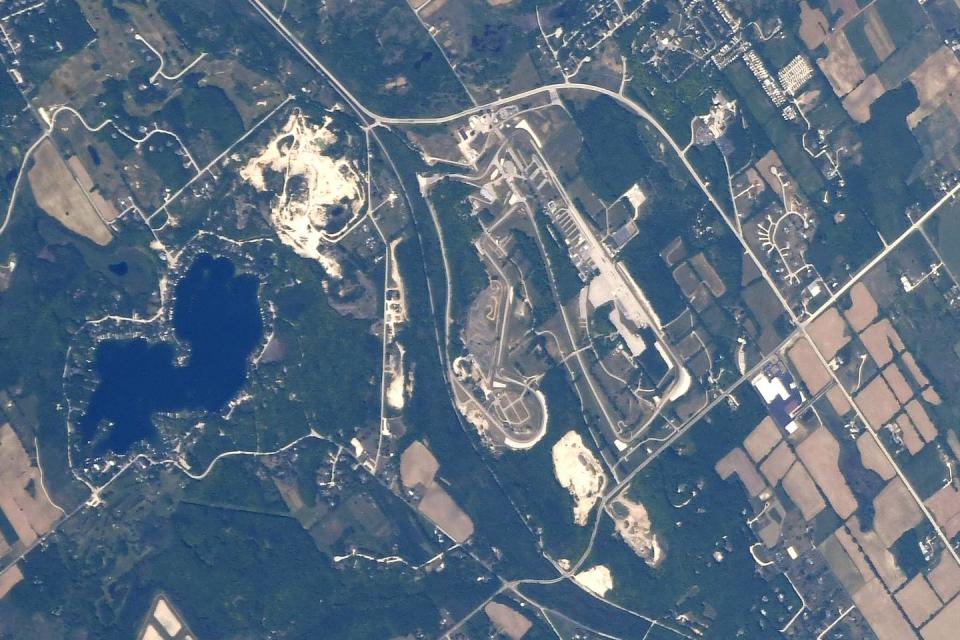
"It's cool to see from space because it's one of the largest tracks you'll ever see in its entirety. The Nürburgring, you can't actually see the whole thing in a camera lens because it's too big. It goes off into the woods. It's really hard to see that track in its entirety, but Road America you can see the whole thing.
"I remember racing karts there when I was in my early 20s and just thinking it was the coolest thing to be on a track that was four miles long, going 100 miles an hour down the back straight in a go-kart. Then having seen both Can-Am cars, and vintage cars racing there, and Indy cars. It's just a really cool track."
Circuit of the Americas
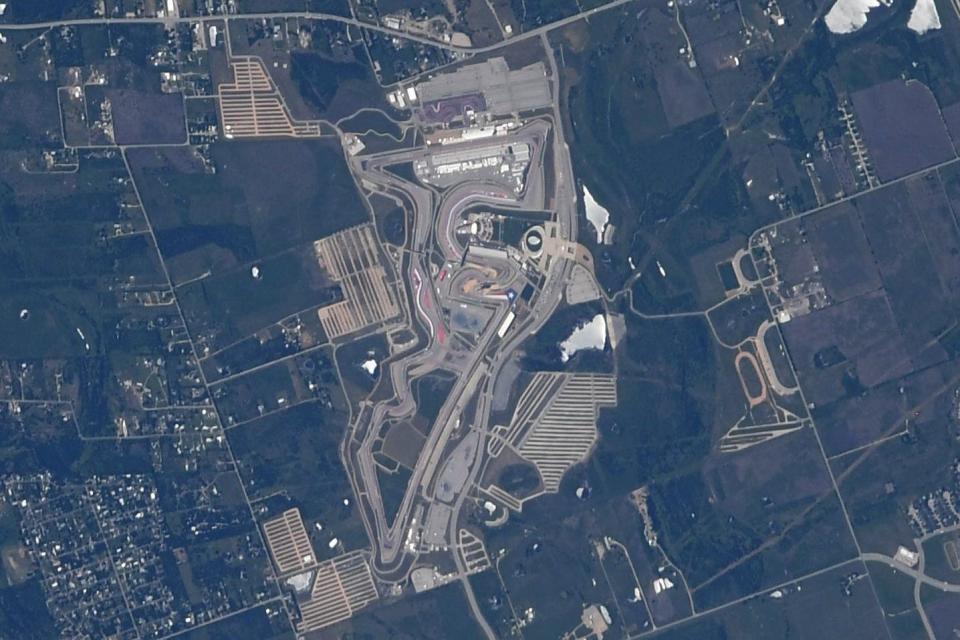
"It's here in Austin, and it's very colorful and beautiful from space, and I think they've had some good successes there. And as I know personally, it's a fun track to drive as well, and I've heard other drivers say it's a cool circuit to be on."
Motorsports fans loved Feustel's project. "I had no idea actually how popular it would be," Feustel said. "It was a little bit overwhelming at how many people really thought they were cool, and how many people were expecting photos. It got to a point where I said, 'Man, I've got to get this photo, because people are going to gripe if I don't post something.'"
"I think that I did achieve my objective, which was to get other people interested in what it is we do, or at least gain some awareness."
Back on earth, Feustel tends to a fleet of classic BMWs, including a Bavaria, an E28-generation 5-Series, and a 1972 3.0 CS in need of a restoration. He's also restoring an old Mercedes for a friend, and having recently acquired his Sportscar Vintage Racing Association license, hoping to enter some competition. He also hopes his photos from the ISS will stand the test of time.
"I hope people still cherish the photos. Still get something out of them," he said "You can get a better image of a racetrack from Google Earth, from a satellite, but you can't get a better hand-snapped photo. They just don't exist. These are the ones."
You Might Also Like

 Yahoo Autos
Yahoo Autos 